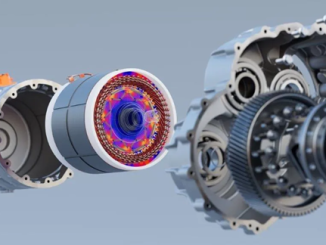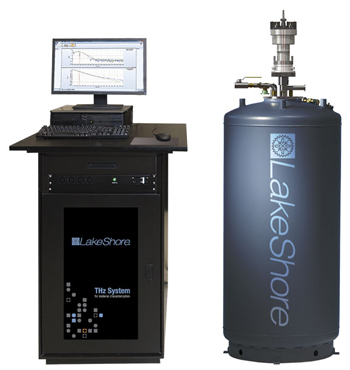A new web-based technical presentation from Cobham Technical Services helps designers of electric motors and generators use finite element analysis (FEA) techniques to accelerate product development and improve design accuracy. The presentation will also be of interest to electromagnetic and electromechanical analysts, as well as engineers who are currently using analytical design packages for rotating machines. First shown live to a pre-registered audience as a webinar, the 47-minute audio/visual presentation is now available(in English and French) for on-demand playback via Cobham’s dedicated motor design software website.
 Titled ‘Introduction to Rotating Electrical Machine Design using Opera’, the presentation outlines how Cobham’s low frequency electromagnetic simulation software enables designers to improve the performance of motors and generators to meet specific economic, efficiency and operating environment targets. Making extensive use of graphics, it covers all key areas of FEA and is ideal for people who are new to the subject.
Titled ‘Introduction to Rotating Electrical Machine Design using Opera’, the presentation outlines how Cobham’s low frequency electromagnetic simulation software enables designers to improve the performance of motors and generators to meet specific economic, efficiency and operating environment targets. Making extensive use of graphics, it covers all key areas of FEA and is ideal for people who are new to the subject.
After outlining the fundamental principles of FEA, such as defining model geometry, creating finite elements (meshing) and specifying or importing material properties such as B-H curves, the presentation takes a detailed look at aspects especially relevant to rotating electrical machines. These include hysteresis loss, the demagnetization effects of short-circuits and other faults, and the critical importance of obtaining an accurate representation of the magnetic field in the rotor-armature air gap. Engineers modeling highly complex magnetic gearing systems involving concentric rotating and static magnetic paths are shown how Opera simplifies the task by allowing the definition of multiple air gaps.
The presentation discusses how by setting suitable periodicity boundaries, users can reduce the size of the electrical machine model – and therefore the number of equations that need to be solved – significantly, leading to much faster computation times. This is especially important for designers of high pole count machines, because it enables the analysis model to be a fraction of the full device.
In Opera, current carrying conductors are represented using coils; Opera 3D provides a comprehensive library of standard coil forms such as solenoids, racetracks and bedsteads. If the required coil is not in the library, it can be represented by a continuous combination of bars, arcs and bricks. Scripting facilities enable users to create libraries of commonly used coils for a particular machine very easily.
The increasing complexity of electrical devices means that a model of a motor or generator may not be sufficient to obtain an accurate representation of its behavior under all operating conditions. The presentation therefore describes how Opera’s standard circuit editor enables power electronics and switching circuits to be defined, which then interface with the conductors in the model of the device itself. Simple ‘drag and drop’ techniques are used to position general circuit representations of voltage and current drives, and components such as resistors, diodes, capacitors, inductors, switches and windings. Specific configurations can be defined in minutes, and used to create a library of common test circuits for use during subsequent analyses.
Mechanical coupling in full rotating machine analyses is functionally similar for 2D and 3D – the coupling data can include the moment of inertia and the frictional speed-varying or fixed applied torque. For solving system-level design problems, rotating or linear motion simulations can be included using Opera as part of the system. Co-simulation with Simulink allows the two simulations to exchange data at each Opera time step, and multiple Opera simulations can be included in the same system simulation. The presentation provides an example of two separate Opera 2D models, for the exciter and generator parts of a system, with Simulink ensuring that both rotate at the same speed, as though they were mounted on a common shaft in real life.
Opera allows users to define any shape of device, magnets and coils – as well as generic electrical circuits – which makes it possible to create 2D or 3D models of virtually any type of linear or rotational electrical machine. These include AC induction, brushed and brushless permanent magnet, AC wound rotor induction and switched reluctance motors, as well as induction, permanent magnet and doubly-fed generators. Specific solvers are chosen to maximize accuracy with the computing hardware that is available; the results file is post-processed automatically, to generate graphic displays of the points of interest. Compared to traditional testing or analytical calculations, these provide a much more powerful tool for making design decisions based on detailed assessment of each component part. Forces, torque, hysteresis and eddy current losses can be calculated automatically, as can variables such as flux linkage, cogging torque, fields and saturation, iron loss, demagnetization, etc.
The presentation also highlights Opera’s multi-physics capabilities, showing how the software can perform thermal and structural analyses, and describes how by use of multiple goal-seeking algorithms it helps optimize the design process, automatically ‘homing in’ on the best solutions. Designers are also shown how the Optimizer tool can be used within Cobham’s Machines Environment, an application-specific extension to Opera, to further accelerate the design process. By making extensive use of templates, drop-down menus and Wizard-style dialog boxes, the environment enables users to fully quantify the motor or generator they wish to design, very quickly and easily.
The presentation concludes with a real-world example of FEA, using the Machines Environment to simulate the permanent magnet motor fitted to the Toyota Prius hybrid vehicle. The simulation results are compared to the test results obtained by the Oak Ridge National Laboratory (ORNL) in the USA, which carried out an experimental characterization of the motor and its drive system. In order to demonstrate the Machines Environment’s ease of use, the simulation task was performed by a relative novice in FEA techniques. After selecting basic design data, such as the type and sizes of magnets, rotor, stator and windings, the user amended the profiles of the magnets, rotor and stator manually, to provide a representative example. The first analysis shows the static torque that the motor generates for various drive currents, which correlates closely with the test results from ORNL, while the next run obtains the cogging torque and torque ripple. The magnetic flux density images obtained from 2D and 3D models of the motor also exhibit a high degree of conformity, demonstrating the accuracy of the simulation.
Contact:
Lois Lee
Cobham Technical Services
1700 N Farnsworth Ave Aurora
IL 60505, USA
t: (630) 851-1734
f: (630) 851-2106
vectorfields.info@cobham.com
www.cobham.com/technicalservices
About Cobham
Cobham specializes in meeting the demand for data, connectivity and bandwidth in defense, security and commercial environments. Offering a technically diverse and innovative range of technologies and services, the Group protects lives and livelihoods, responding to customer needs with agility that differentiates it. The most important thing we build is trust. Employing more than 10,000 people on five continents, the Group has customers and partners in over 100 countries.
About Cobham Technical Services
Cobham Technical Services produces the world’s most advanced software for modeling and analyzing electromagnetic equipment and effects. Its virtual prototyping tools speed the design process – helping to achieve a user’s goal, whether that is lowest cost, optimum performance, ease of manufacture, or the best combination.



